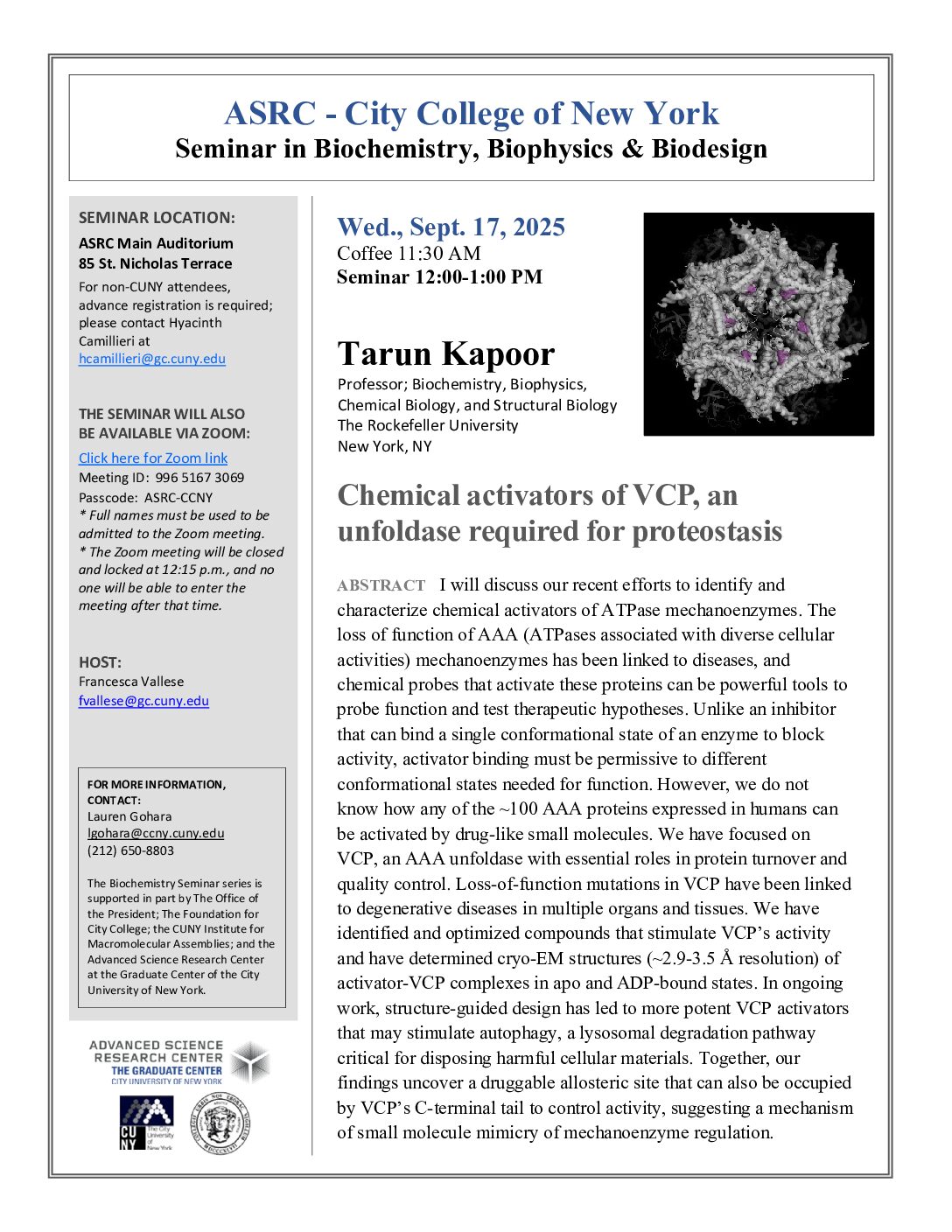
Chemical activators of VCP, an unfoldase required for proteostasis
I will discuss our recent efforts to identify and characterize chemical activators of ATPase mechanoenzymes. The loss of function of AAA (ATPases associated with diverse cellular activities) mechanoenzymes has been linked to diseases, and chemical probes that activate these proteins can be powerful tools to probe function and test therapeutic hypotheses. Unlike an inhibitor that can bind a single conformational state of an enzyme to block activity, activator binding must be permissive to different conformational states needed for function. However, we do not know how any of the ~100 AAA proteins expressed in humans can be activated by drug-like small molecules. We have focused on VCP, an AAA unfoldase with essential roles in protein turnover and quality control. Loss-of-function mutations in VCP have been linked to degenerative diseases in multiple organs and tissues. We have identified and optimized compounds that stimulate VCP’s activity and have determined cryo-EM structures (~2.9-3.5 Å resolution) of activator-VCP complexes in apo and ADP-bound states. In ongoing work, structure-guided design has led to more potent VCP activators that may stimulate autophagy, a lysosomal degradation pathway critical for disposing harmful cellular materials. Together, our findings uncover a druggable allosteric site that can also be occupied by VCP’s C-terminal tail to control activity, suggesting a mechanism of small molecule mimicry of mechanoenzyme regulation.
Please use this link to access Zoom.
For any questions, please contact Hyacinth Camillieri at hcamillieri@gc.cuny.edu.

